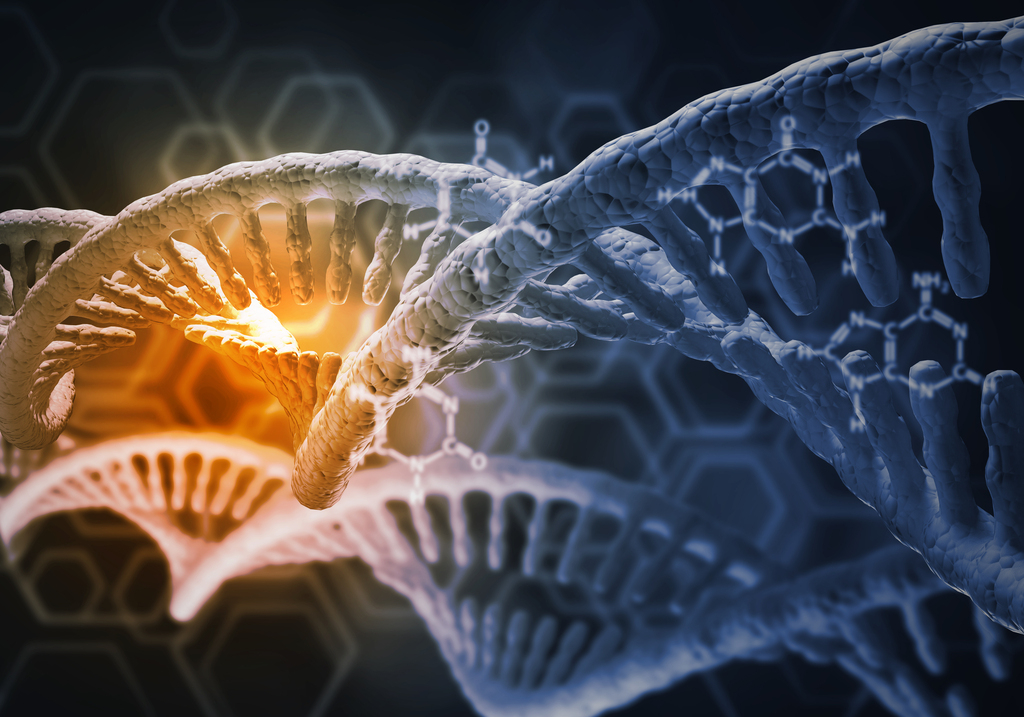Rett Researchers Discover Molecular Mechanism of MECP2 Binding

Khakimullin Aleksandr/Shutterstock
The molecular mechanism by which the protein MeCP2 recognizes and binds to CA repeats — repetitive short sequences of DNA that are found throughout the genome — has been unraveled in a new study that sheds light on the causes of Rett syndrome.
Researchers in France discovered that MeCP2 opens sections where chromatin associates with the nuclear lamina (LAD), which is a dense layer of proteins that lines the inside of the nucleus membrane and facilitates gene activation. Notably, chromatin, found in chromosomes, consists of DNA and protein.
According to the researchers, the next steps will be to examine how MeCP2 binding preserves healthy brain function.
“We identified the function of MeCP2, showing that it is a long-range chromosome organiser, able, among others, to “remodel” chromatin domains associated with the nuclear lamina (LAD),” Stefan Dimitrov, PhD, one of the corresponding authors of the study, said in a press release.
The research, “MeCP2 is a microsatellite binding protein that protects CA repeats from nucleosome invasion,” was published in the journal Science.
Most Rett syndrome cases result from mutations in the MECP2 gene, which contains the instructions for making the MeCP2 protein. MeCP2 has the ability to modulate gene activity by playing a key role in the structure of chromatin. However, the exact molecular mechanism by which loss of MeCP2 causes Rett syndrome is still unknown.
The scientists hypothesized that modified CA repeats could affect the recognition and binding of MeCP2, possibly resulting in its dysfunction in neurons.
The study showed that MeCP2 could selectively recognize CA repeats and that it needed at least five successive CA repeats to optimally bind DNA. MeCP2 recognizes a modified cytosine only when located within a CA repeat, and its binding leads to the exclusion of nucleosomes. A nucleosome is the basic structural component of chromatin and cytosine is one of the four chemical bases of DNA.
Loss of MeCP2 resulted in an increase of nucleosome density in LADs.
“Our work identifies MeCP2 as a microsatellite [repetitive] DNA binding protein that targets the [modified] CA-rich strand and maintains genome regions nucleosome-free, suggesting a role for MeCP2 dysfunction in Rett syndrome,” the scientists wrote.
Analysis of the crystal structure of MeCP2 showed that the recognition of the modified CA repeats specifically occured through the aminoacid Arg133. A mutation affecting this aminoacid — the building blocks of proteins — is known to cause Rett syndrome.
“Our data provide insights into the origin of Rett syndrome at the molecular level and suggest that this neurodevelopmental disorder could be viewed as a chromatin disease, originating from the inability of mutant MeCP2 to bind and protect the CA repeats from nucleosome invasion,” the investigators wrote.
“The discovery,” added Dimitrov, “that MeCP2 binds a new CA repeat motif that may influence chromatin structure in specific LAD contexts provides opportunities to investigate the consequence of this binding on maintaining healthy brain function. Moreover, the approach used in the paper could be used for analysing other diseases (including Huntington Syndrome), where the DNA repeats are playing a major role.”
“It would be fair to say that the paper “paves new avenues” for research on rare diseases,” he said.
Science also published an editorial on this study by Huda Y. Zoghi, MD, the researcher responsible for discovering MECP2 mutations as a genetic cause of Rett syndrome in 1999.







